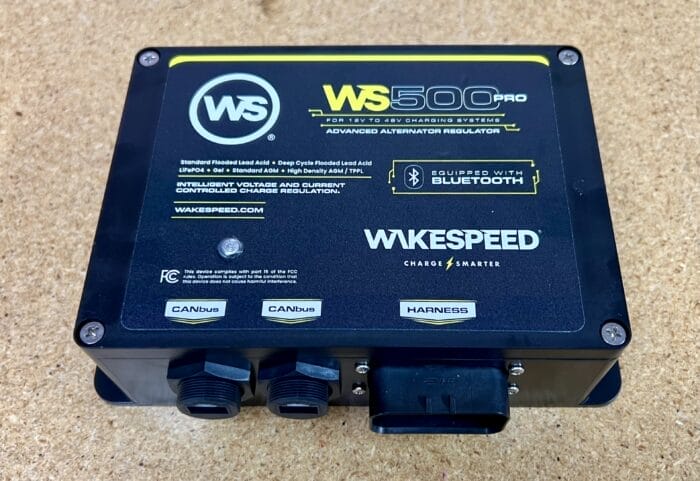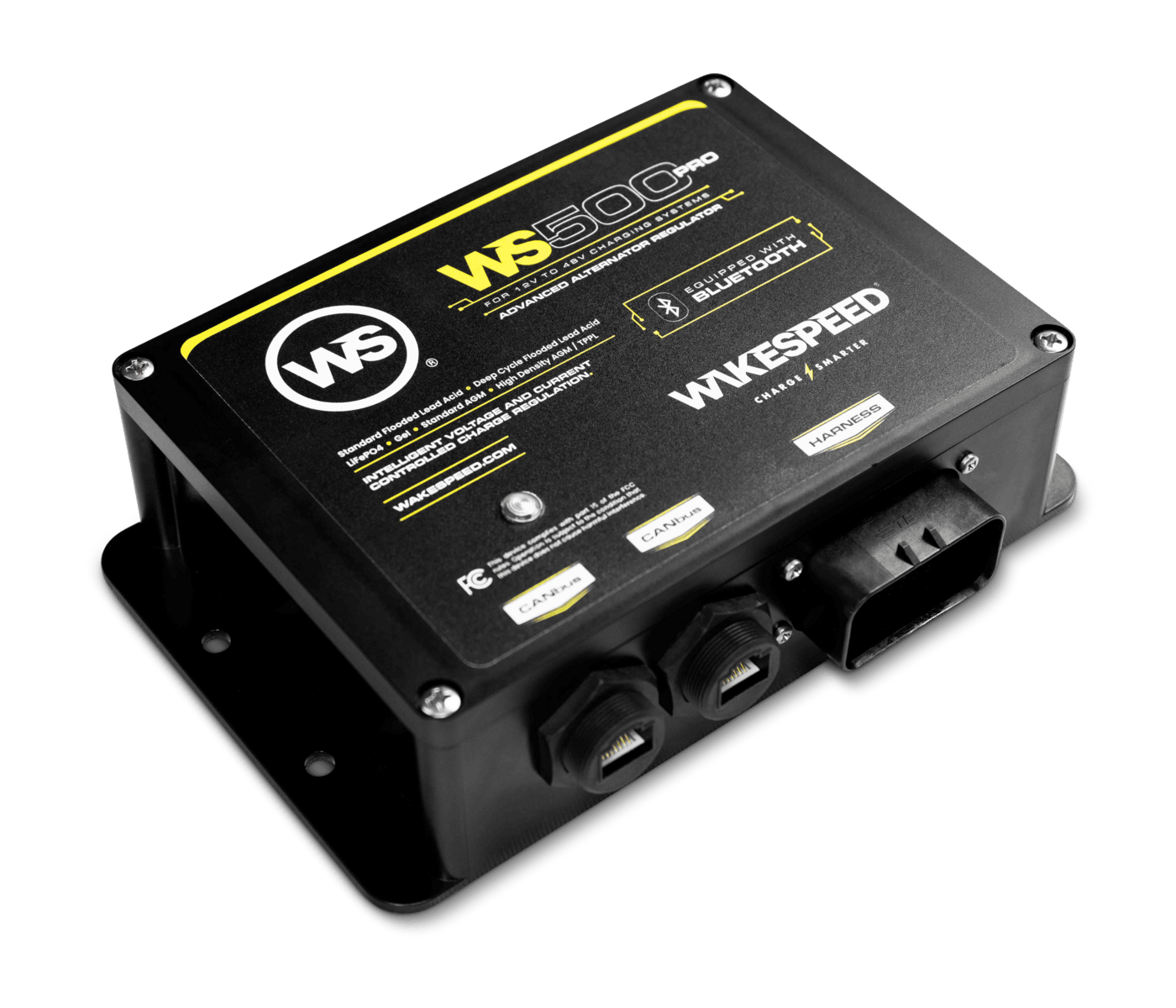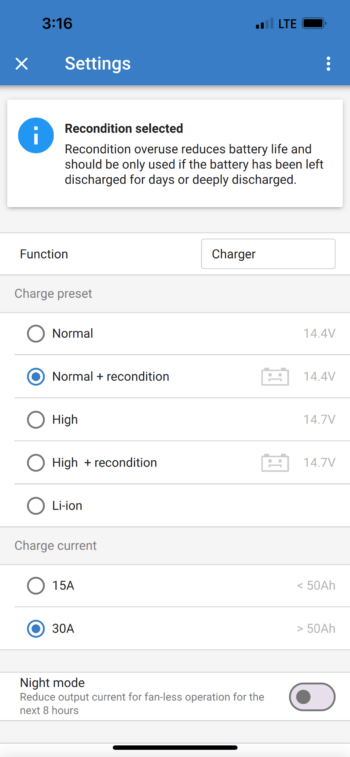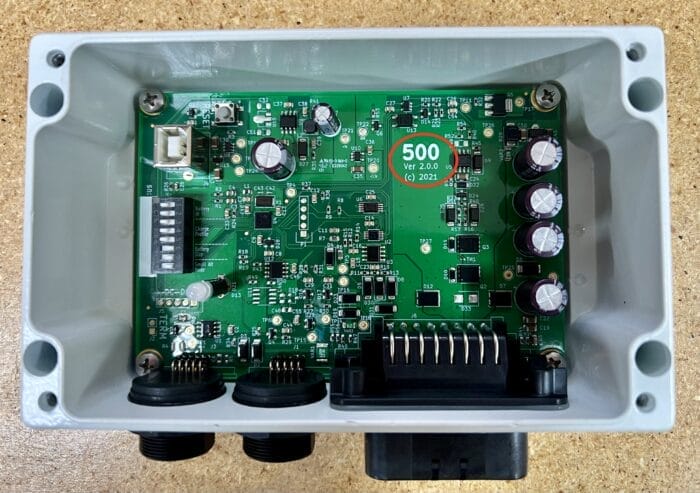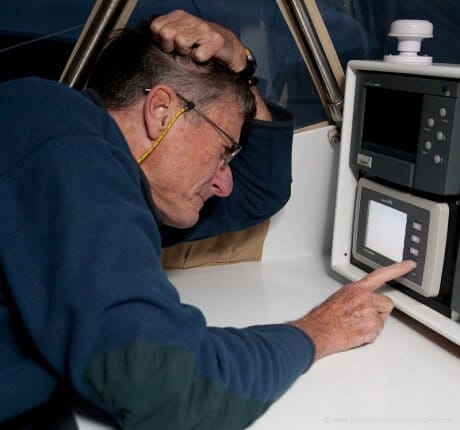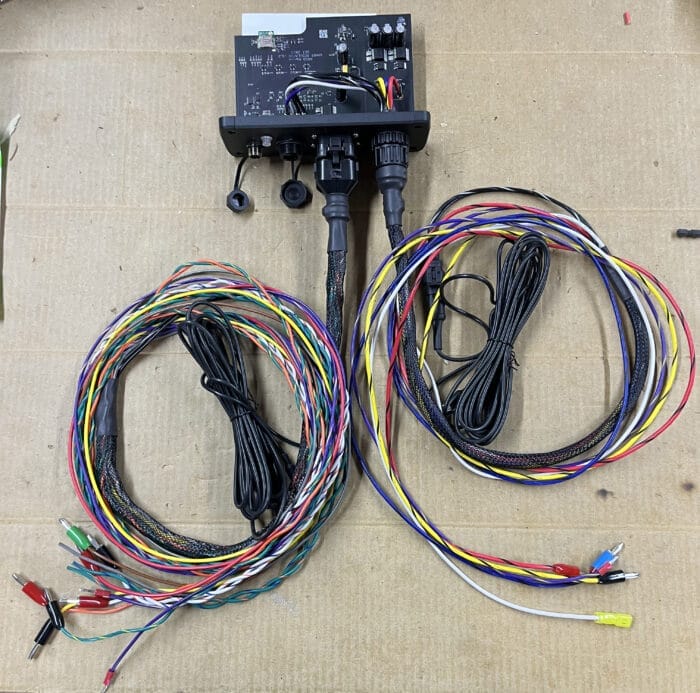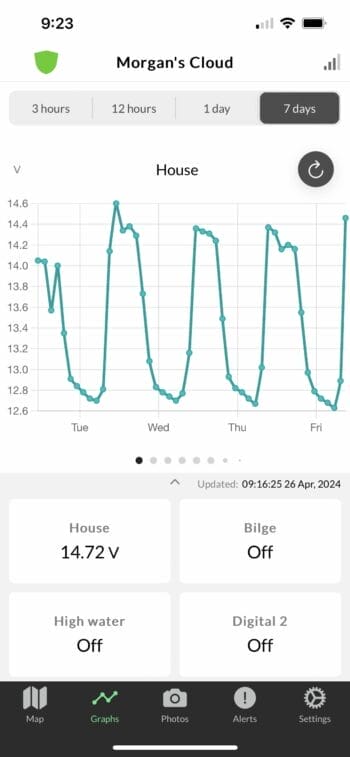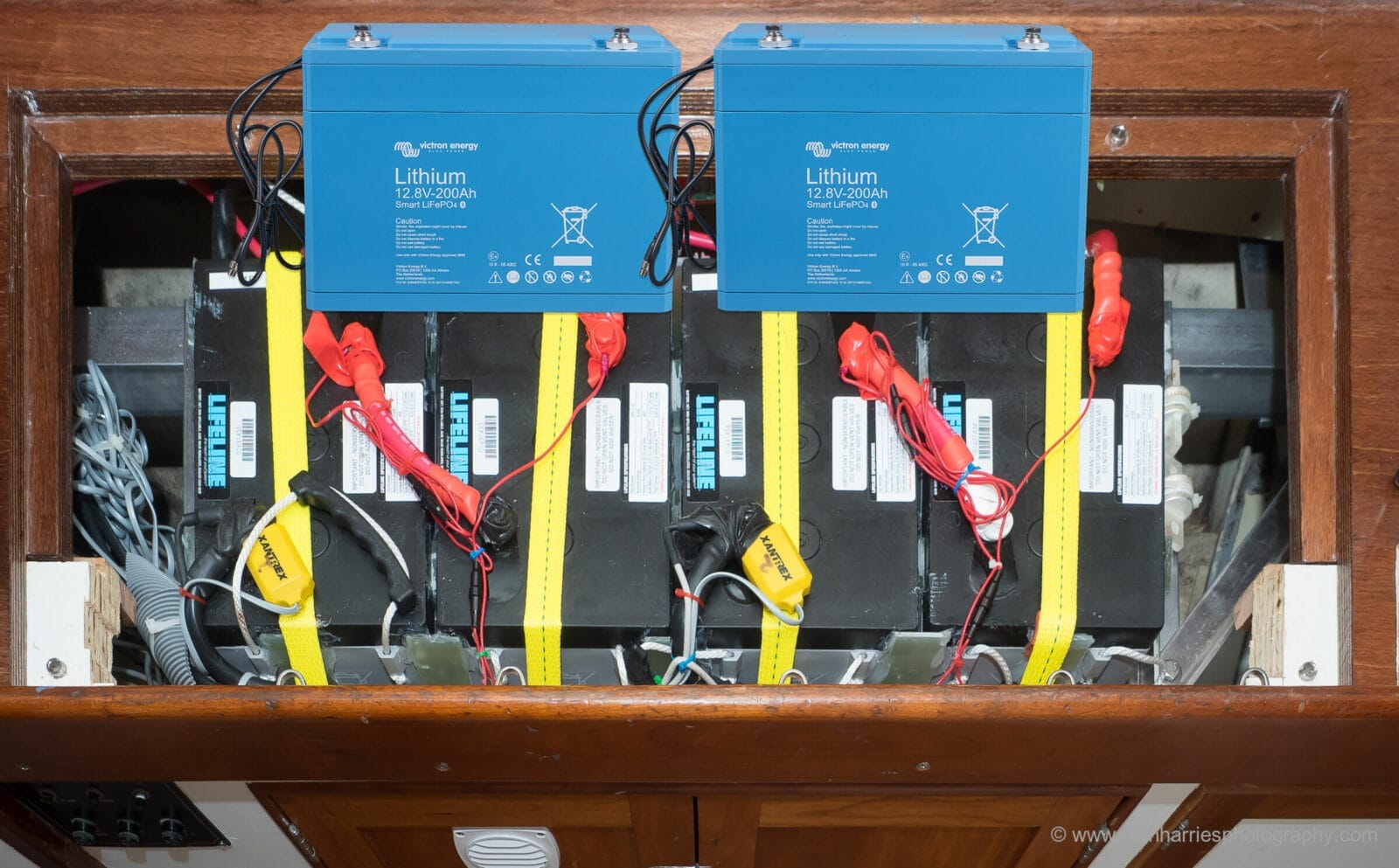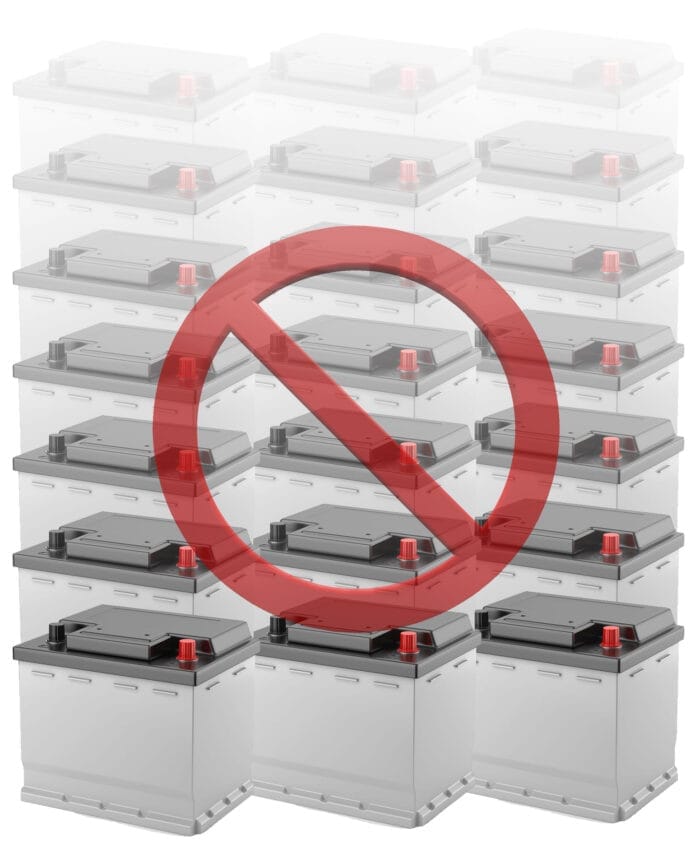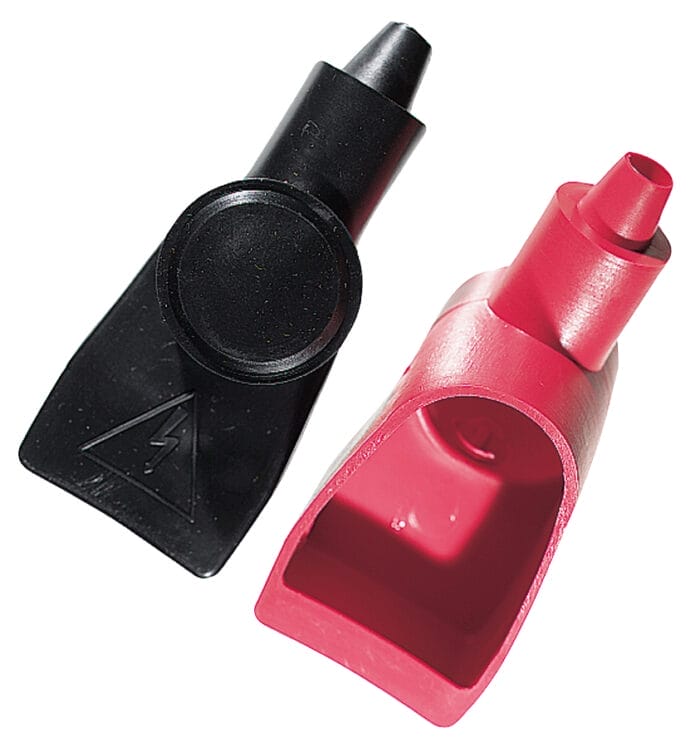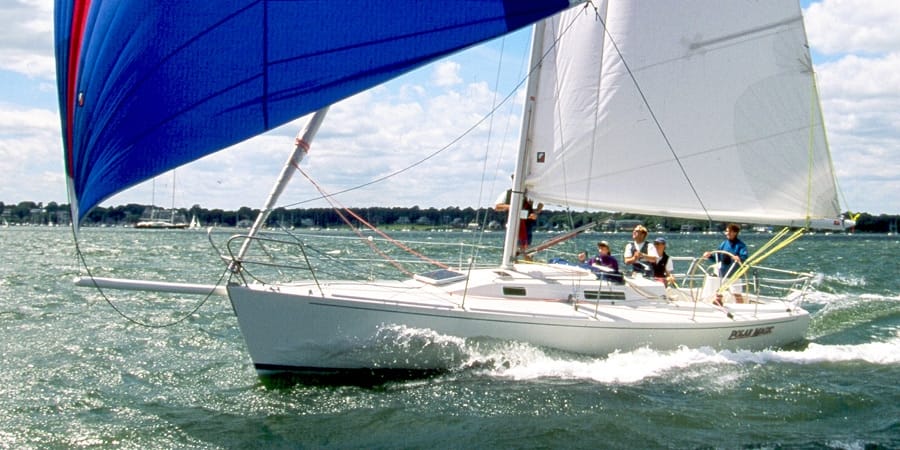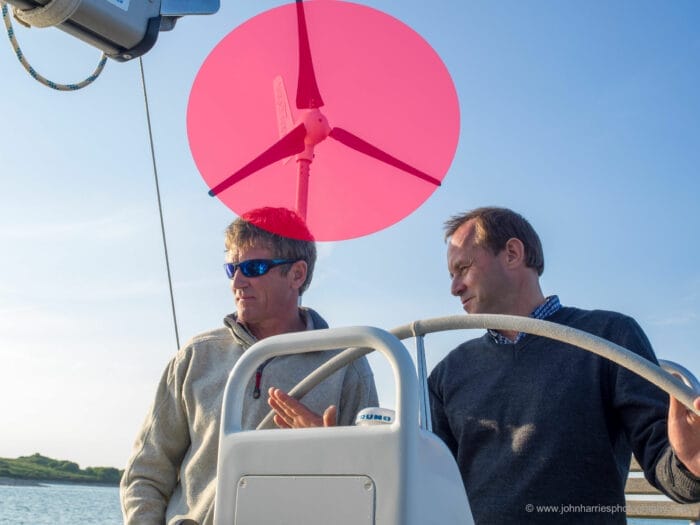
Tips, Tricks & Thoughts:
electrical
-
An Easily Removable Solar Panel
33 CommentsReading Time: 4 minutesMembers
-
Battle Born Smart Batteries Initial Review
15 CommentsReading Time: 4 minutesMembers
-
Wakespeed WS500 Pro, Shipping
0 CommentsReading Time: < 1 minuteFree
Now Shipping
Al Thomason, co-founder and the designer behind our favourite alternator regulator, the Wakespeed WS500, gave me a call to say that the Pro model is now shipping to dealers and distributors and that the price is US$50 more than the original WS500, so around US$650. The harness, which will continue to be sold as an option for those who don’t care, or don’t want, BlueTooth control and monitoring, is extra.
-
An Interesting Alternative To Lithium Batteries
28 CommentsReading Time: 2 minutesMembers
-
Wakespeed WS500 Pro On Test
5 CommentsReading Time: 2 minutesFree
Well, that was quick. It was just last week that I shared that the WS500 Pro was on time, and today what should turn up here at AAC World Headquarters, but a fully functioning production unit.
Al put on his red suit and slipped down the chimney to put it under the tree…wait, that’s not for four months, so I guess it was Fedex.
Anyway, thank you Al and Dragon Fly Energy for the evaluation unit.
Of course, being a cool calm guy who never gets excited by new technology, I put it aside and might get around to installing it six months from now…not.
The reality was that I had it out of the box and my iPhone connected to it within 10 minutes1—yes, it’s that easy.

And that highlights one of the features I like the best on the original WS500 and the Pro: both can be powered up on the bench so we can program them before installing on the boat.
As you can see, the Pro is being powered by a standard USB cable using an old Kindle wall wart, and my phone is connected to it via Bluetooth and showing the regulator monitoring screen.
See this Tip for why that’s a way cooler feature than you might think, as well as more information about the Pro.
I also verified that I can fully program the regulator from my iPhone over BlueTooth2.
By the way: the Pro automatically detects that it’s being powered by USB, instead of the harness, and so does not throw an error because there is no battery or alternator connected, like the WS500 does3.
Sane Password Implementation
Before I close, one other cool feature of the Pro I have not mentioned before:
The first time we connect a phone to a new Pro it insists we change its password before it will let us change any parameters.
Smart…do you want your brother-in-law playing with the configuration? Or maybe some super-smart but vindictive 14-year-old on the boat next door?
But wait, what happens if you forget the password, or maybe buy a boat with a Pro already installed? Not a worry, if we connect directly to the unit using the USB cable we can reset the password4.
Further Reading
- Much more on why the WS500 has long been the AAC recommended alternator regulator.
- Half of that was looking for a USB cable and wall wart. ↩︎
- At the time of writing, this requires a Beta test version of the app which is only available by invitation; however, Al tells me that the final app will be available to all within a week…damn, I kinda liked feeling special. ↩︎
- Said error didn’t have any negative effect, but I guess it alarmed (bad pun alert) people. ↩︎
- I think we would notice if said vindictive 14-year-old came aboard our boat and disappeared into the engine space carrying a USB cable and an Android phone or computer. ↩︎
-
Wakespeed WS500 Pro On Time
4 CommentsReading Time: < 1 minuteFree
Late September
In April I hinted about a Bluetooth-enabled version of the WS500, our favourite alternator regulator, and in late June I confirmed that the WS 500 Pro had been announced, for shipment in “fall of 2024”.
That said, I always worry that products announced before they are ready to ship will be late, often horribly.
Anyway, the good news is that Al Thomason, designer of the WS500 and Pro, tells me that the new unit is on time:
- Early access production units ship next week.
- General availability is scheduled for late September, as promised.
- AAC will be receiving an early access evaluation unit soon—thanks, Al.
And further good news, I just received a notification that the Wakespeed app updated for Bluetooth is ready for early access testing on Android and iPhone (I’m on the Beta test list).
And if you just can’t wait to play with a WS500 Pro, Al himself will be at the Port Townsend Wooden Boat Festival with a bunch of fully powered-up units during the first week of September.
-
The Correct Shore Power Charger Profile To Use For Lead-Acid Batteries
0 CommentsReading Time: 3 minutesMembers
-
WakeSpeed Pro Alternator Regulator Announced
8 CommentsReading Time: 4 minutesMembers
-
Q&A—Do I Need a Fail-Safe ABYC-Compliant Galvanic Isolator?
0 CommentsReading Time: 2 minutesMembers
-
Don’t Buy Generation One Electronics
10 CommentsReading Time: 2 minutesMembers
-
ARCO Zeus Ground Loop Problem
9 CommentsReading Time: 3 minutesMembers
-
Solar: Lead-Acid Battery Saver, Potential Lithium Wrecker
20 CommentsReading Time: 3 minutesMembers
-
Don’t Fill Lead-Acid Battery Space With Lithium
11 CommentsReading Time: 2 minutesMembers
-
Huge Battery Banks Generally Make No Sense
9 CommentsReading Time: 2 minutesFree
I’m working on the second part of the Adventure 40 electrical system specification.
One of the fun things about this project is that since we are starting with a blank page, rather than upgrading an existing boat, which I often write about, design fundamentals become more apparent.
Here’s one that just came to mind:
(more…)
-
WakeSpeed And Victron Get Even More Cuddly
13 CommentsReading Time: 2 minutesMembers
-
Cover The Negative Terminal On Batteries
23 CommentsReading Time: < 1 minuteMembers
-
Another Danger With MRBF Fuses
22 CommentsReading Time: 2 minutesMembers
-
Lithium Start Batteries
5 CommentsReading Time: 2 minutesMembers
-
Great Source: How Lithium Batteries Charge
3 CommentsReading Time: 2 minutesMembers
-
An Interesting Sailboat Electrical System Upgrade Case Study
7 CommentsReading Time: 2 minutesFree

Scuttlebutt have an interesting two-part story about upgrading the electrical system in a J/105. Worth a read, even though this is a racing boat.
To me the takeaways are:
- How terrible the electrical systems are in production boats, to the point of useless, at least for offshore use. They were running the engine 8 hours a day to keep up with demand!
- Replacing the stock alternator driven by a single belt is job #1 in any electrical system rebuild.
- Replacing the standard internal regulator that ramps down charge current way before the batteries (lead or lithium) are even close to charged is part of job #1.
- Details like properly crimping battery cables are vital.
- In most cases the best bet with a production boat electrical system is to tear the whole battery and charging system out and start again.
- Read the manuals, several times.
- Most of what you see out there on YouTube about lithium is bogus.
- A dedicated and isolated start battery is the only way to go. Off/one/two/both switches are just silly.
- Seems like Electromaax has some good kit. I spent a little time on their web site and was impressed.
All useful, but the biggest takeaways are:
- Just getting the alternator and regulator right reduced charging from eight hours a day to one.
- They would have got the same benefit with an appropriately sized lead-acid bank, but it would have been bigger and heavier, so in this case lithium was a clear winner, but only for that reason.
- Without the alternator and regulator upgrades, upgrading to lithium would have been a total waste of time and money—getting charging right is the key to success.
Much more on electrical system upgrades:

-
How To Blow Up Your Alternator
8 CommentsReading Time: 2 minutesFree
Anytime I write about batteries and charging someone is bound to bring up one of the clever gadgets that fool a stock alternator into charging at a higher current for longer without resorting to external regulation.
Some of these gadgets, particularly the VRC-200 from Nordkyn Electronics, are undoubtedly very clever—here’s another one I wrote about.
And I can certainly see using one of these as a quick and relatively inexpensive way to make the stock alternator charging a small battery bank on a boat used for weekends, and perhaps the occasional week cruise, charge more quickly and efficiently.
But for an offshore voyaging live-aboard boat, these things are not a good idea.
Most alternators that come with our engines will not last long if pushed hard day in day out, particularly if trying to charge a large bank (lithium or lead-acid)—stock alternators are simply not designed for that kind of duty cycle.
That said, the Nordkyn will extend alternator life by monitoring its temperature, but that’s going to mean that most of the time the alternator will not be putting out much because stock OEM alternators heat very quickly as soon as they come under load.
Of course you could use the Nordkyn with a heavy duty alternator, which would be a good combo.
But my thinking always has been, and remains, if we are going to the trouble of installing a high-capacity bank, we might as well do the charging right with a rugged alternator designed for the job, installed right, and with an external regulator that won’t be subjected to the heat inside the alternator.
And then if we are going to do the alternator right, we might as well go the whole hog and do the regulator right too.
Fun Demo
By the way, Victron have a fun demo showing how fast they can burn out an alternator when charging lithium batteries. There’s a lot of good stuff to learn here, particularly the counterintuitive fact that low engine RPM will do more damage.
That said, we offshore boat owners should understand that even a big lead-acid bank can fry alternators too—our 800 Ah at 12 volts (9 kWh) AGM lead-acid battery bank on the McCurdy and Rhodes would happily lap up 250 amps for an hour, at least, if we had had an alternator that big, and regularly sucked 150 amps for two hours out of the alternator we did have.
Anyway, have a watch, it’s interesting:
-
Beware Lithium Battery Sales
8 CommentsReading Time: < 1 minuteFree
In the last few weeks I have been getting a series of emails from Battle Borne aggressively promoting sale pricing on their lithium batteries, see the above.
As far as I can see, these are batteries that don’t have any way to communicate with external charging sources or even a way to inform you that they are about to load-dump and turn your lights out.
In our opinion, this type of battery is:
- Potentially dangerous on yachts, because there is no warning of load dumps, as we explain here.
- Not compliant with ABYC E-13, which may have insurance implications.
And further, our advice is that only batteries that can communicate through CANbuss (wires), not Wi-Fi or Bluetooth, with charging sources and monitoring systems should be used on boats, particularly offshore boats.
Much more here:

-
Wind Generators Can Be Dangerous
9 CommentsReading Time: < 1 minuteFree
This photo of the founders of Boréal on one of their boats works well to show the point of this tip but, to be fair, it’s the camera angle that makes this installation look so dangerous. A few weeks ago I wrote an article on renewables in which I opined that the days of wind generators are, for most cruising usage profiles, over. Too much windage, too much noise, in return for less generated electricity, particularly when it matters, than many people believe.
The interesting thing is I got surprising little pushback.
Anyway, here’s another reason to think seriously before installing a wind generator: the things can be seriously dangerous, as this cruiser found out the hard way.
So if you do decide to install a wind generator:
- Make sure it’s high enough that no crew member, even standing on the side deck or lazarette, can extend their arm into the spinning blade.
- And, further, if the thing runs amok in high winds, it’s better to let it destroy itself, rather than risk limbs trying to physically stop it.
-
Kilowatts and Horsepower
9 CommentsReading Time: 2 minutesFree
I’m as concerned about climate change as anyone, and maybe more than most, but obfuscation and pretengineering does not help us get to a sustainable future.
A good example is the way that electric-drive vendors use horsepower when talking about the diesel engine they want to replace and kilowatts when talking about their offerings.
You see, horsepower and watts measure the same thing: power.
1HP=.7457kW
It’s that simple,
I was triggered to write this by an electric-drive company claiming that installing their serial-hybrid drive—diesel generator driving an electric motor—in a long thin efficient motorboat would save 30% in fuel burn over the standard diesel engine that comes with the boat.
But here’s the smoking gun, they promised 8.5 knots top speed with the generator driving the electric motor, but with the standard diesel that boat can do 18 knots and cruises efficiently at 10.
Yup, all they have done is decrease the power, probably by more than half. Of course that will save fuel.
But here’s the thing, in most usage profiles for cruising boats, simply putting in a right-sized diesel engine and settling for say 9 knots cruise and about 11 knots wide open—still faster than the electric—instead of 18, would almost certainly save more fuel as well as costing way less (think less than half), and weighing less, than an electric motor, generator, and a huge lithium battery bank.
The latter to run silent for an hour or so…and then have to be charged with…the diesel generator, in most cases.
Wait, it gets worse, weight is a killer on a boat like this, making the hybrid setup an even sillier idea since it will weigh way more than the right-sized diesel and so make her even less fuel efficient and take up more space.
What fevered mind came up with the idea that burning diesel to create rotation (generator engine), and then turning that into electricity (generator alternator), and then turning that back into rotation (electric motor), is more efficient than burning diesel to make rotation (diesel engine) in the first place—conversion losses are a bitch (they compound)—one conversion always beats three.
Sure, electric is great, as long as we stay close to a source of renewable produced power, but staying close to the dock is not what people will use this boat for—and no, a practical amount of solar panels are not going to help much.
Which brings us a full circle.
It’s always a danger signal when a sales person talks HP one moment and kW the next. They are probably trying to hide something, and now you know what that is.
And no, there is nothing magical about a horsepower or a watt just because it was produced by an electric motor. The whole torque thing is most-all BS too when applied to cruising boats—great though if you want to get a heavy train moving from a standing start.
More about all this here, including a very cool calculator, which will let you see if your usage profile will benefit from an electric drive. It’s a bit out of date but the basic physics does not change…conversion losses are a bitch…wait, I already said that.
-
An Even Better Alternator Regulator?
4 CommentsReading Time: 3 minutesFree
There has been a lot of excitement recently about the release of a new alternator regulator that takes direct aim at the WakeSpeed WS500‘s position as the only truly smart regulator, primarily because it measures the current (amperage) that goes into the battery and then acts on that information, rather than making a bunch of guesses about the state of the battery that are usually more wrong than right, like, for example, the regulators from Balmar—I explain all this in more detail here and here.
The new regulator is the Zeus from ARCO, and both Panbo and Rod Collins, who advised during the development, are pretty excited—I recommend that you read Rod’s article for an insider’s view on how this new regulator came to be.
I’m super excited too since the new regulator fixes a problem that I have been beating on Al Thomason, inventor of the WakeSpeed, about since the WS500 came out: no easy way to program it and see what it’s doing over Bluetooth—Al and I seem to chat every six months or so about one thing and another and I’m sure he is getting sick of hearing it!
And the Zeus seems to be easier to install and program in a bunch of other ways; for example, the harness it comes with will work with both N- and P-type alternators.
But here’s the thing.
I know from our chats that since the WS500 was released, much, possibly most, of Al’s energies and smarts, which are prodigious, have gone into making his regulator work seamlessly, mostly over CAN bus, with the ever more sophisticated lithium battery management systems from companies like Lithionics and Victron, as well as many others.
Here’s an example of how tightly Al has integrated the WS500 with Victron’s products, including their system monitors.
We are talking close cooperation here. For example, in a multi-BMS multi-battery Lithionics setup, if one of the BMSs goes offline, the WS500 will know that and automatically adjust its charging profile accordingly.
The point I’m making is that it’s all very well for ARCO to claim that they have all this cracked on day one, and much more besides, but is that real when one of the smartest engineers in the business has a five-year lead on them?
And process control programming and communication, which is what this is, is an iterative process of try, debug, try again, debug…
And further, keep in mind that with this stuff one bad bug could take out thousands, or even tens of thousands, of dollars worth of equipment in the blink of an eye, or render your system down until sorted out.
And one of the things that I know Al has focused on, because he’s a deeply experienced process control engineer, is failsafe, so if his regulator ever gets confused about what’s going on it defaults to shutting things down, or at least switching to less potentially damaging charge parameters.
This is actually one of the reasons it can be a bit frustrating to get the WS500 working the way we want it to. The default configurations are very conservative.
So sure, if you have a nice simple and robust lead-acid battery-based electrical system, give the Zeus a try, if you wish.
But if you have, or are contemplating, installing a sophisticated lithium battery-based system, I suggest sticking with the WakeSpeed WS500 for a while while ARCO make the almost inevitable early-days mistakes on someone else’s boat. And also until the manufacturer of your battery and BMS tell you they are 100% happy seeing their batteries charged by the Zeus.
And one final thought. The Zeus page claims to make it super easy to change parameters with your phone. Sure that’s cool, but with ease of change comes the temptation to play around indiscriminately and changes can lead to big problems, so be careful.
All that said, don’t get me wrong, I’m still super-happy to see a competitor to the WakeSpeed WS500—bet we see that Bluetooth capability I have been bitching about for four years real soon.
Disclosure
I like Al Thomason and he has been good to me by tirelessly sharing his smarts in phone calls and emails.
On the other hand, I’m on record as more than a little sceptical about Firefly/Battle Born, the company that bought WakeSpeed, so I think those two kinda cancel out.
You should also be aware that Al has arranged for AAC to get two WS500 regulators for free, one of the early ones (now working on our J/109), and a month ago, one of the newer ones with a NEMA 2000 output that I will install this winter and play with next summer.






